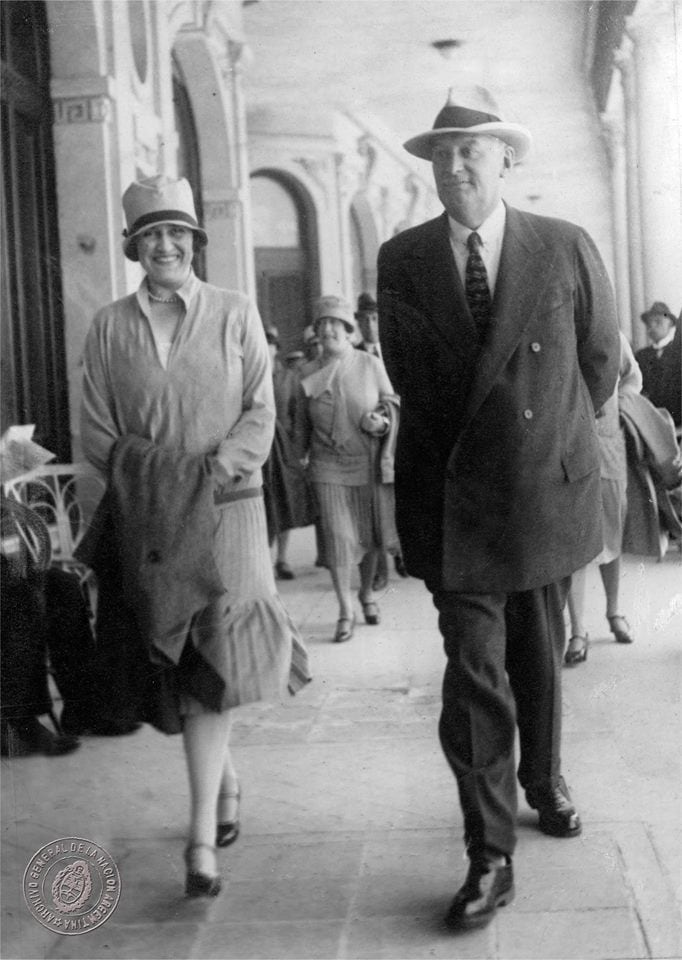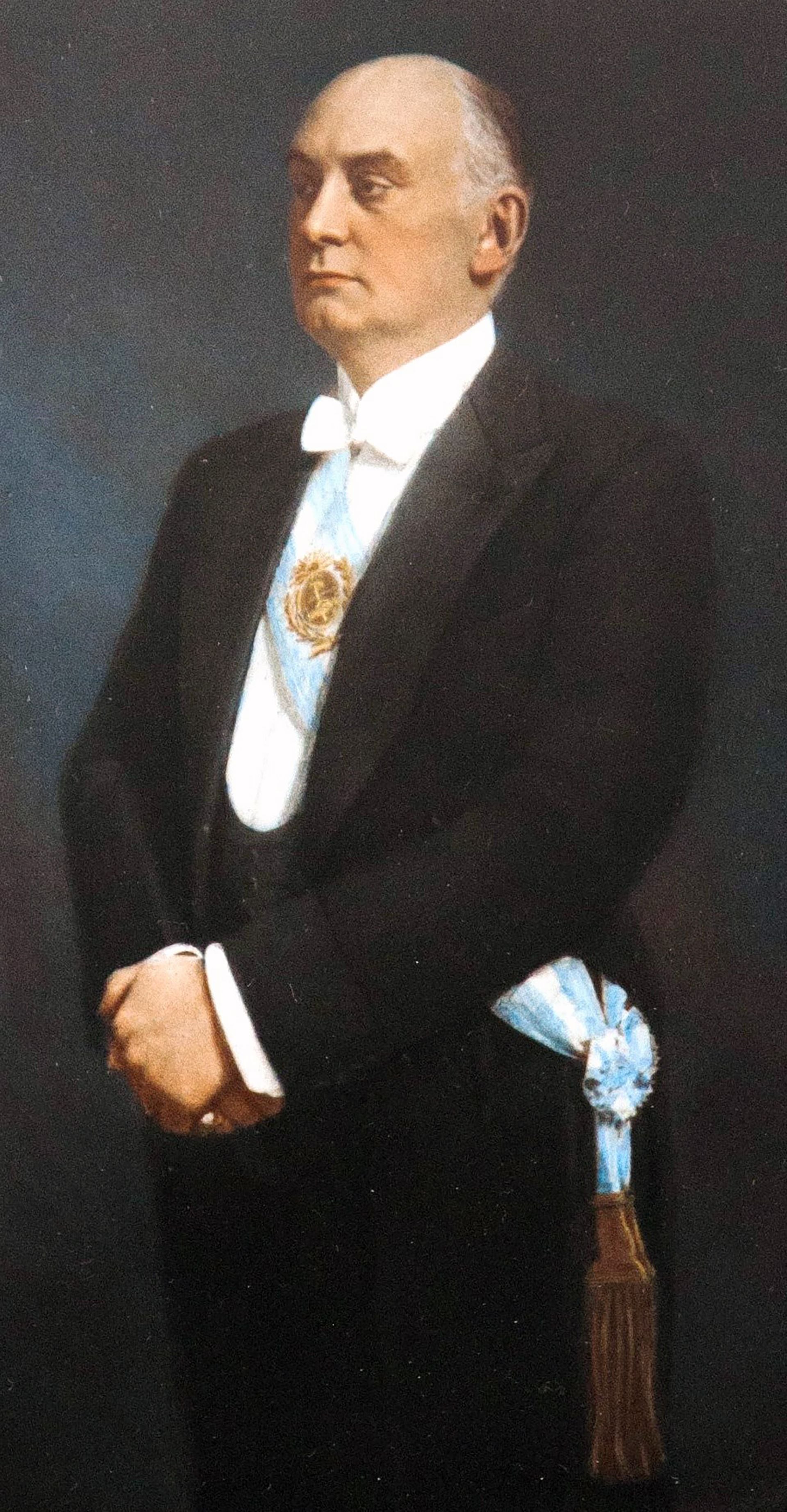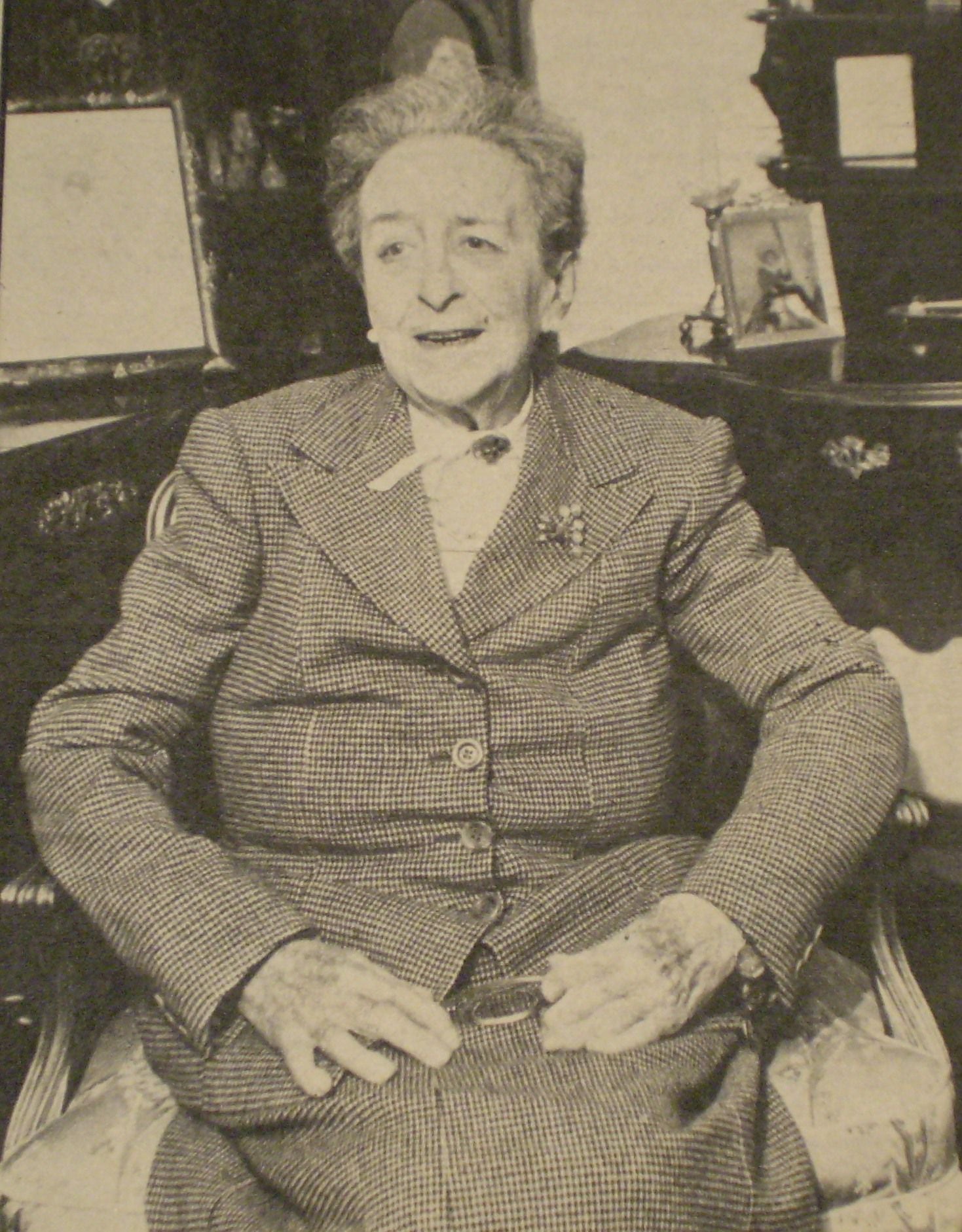:quality(85)/cloudfront-us-east-1.images.arcpublishing.com/infobae/3N5N7QTNL5DF5BQUCSRPI43DCY.png 420w)
On the morning of Monday, March 23, 1942, Marcelo T. de Alvear, 73, was unable to get out of bed. He suffered from heart failure and was easily agitated. He had been living in La Elvira for a fortnight, the house he had ordered to build in Don Torcuato, a town named after his father, the former owner of those lands. The name of the house reminded Elvira Pacheco, his mother, who died when he was 28 years old.
Around noon a group of friends had come to visit him and stood respectfully in a corner of his bedroom talking quietly. His wife Regina wouldn't leave his side.
This man was coming to the end of his life after a long political career. He was still the young Marcelo, born on October 4, 1868, a law student when he joined the youth protesting against the government of Miguel Juárez Celman. That “good boy” was at the Florida Garden rally and it was just listening to the fiery speech of leader Leandro N. Alem to offer him all the collaboration he needed. Then, he was in the Park Revolution of July 26, 1890.
He came from a patrician family. The first Alvear in these lands was Diego de Alvear and Ponce de León, official of the viceroyalty. His grandfather was General Carlos María de Alvear and his father Torcuato - was mayor of Buenos Aires during the presidency of Julio A. Roca - did not see him received as a lawyer, at the University of Buenos Aires. He obtained his doctorate with the thesis “Of the executors”.

He followed Alem in the formation of the Radical Civic Union, and in the revolution of 1893 he led an armed group of 75 men who took the Temperley police station and railway station, which earned him the praise of Hipolito Yrigoyen. The triumph in Buenos Aires lasted only a few days. He suffered the harsh repression ordered by Minister Manuel Quintana, and he knew the prison.
There she began a relationship of friendship and affection with Yrigoyen, 16 years older. When in 1897 he fought a duel with Lisandro de la Torre, Marcelo was, together with Tomás de Valle, one of his godparents.
He followed him to Don Hipolito in his party intransigence and in that struggle against what the leader of radicalism called “the Regime”.
Politics wasn't his only world. In 1900 with his Locomotive, he won the first car race in the country, and excelled in various sports, such as fencing, horseback riding and shooting competitions.

That bachelor so coveted by the Buenos Aires girls in 1907 married the lyric singer Regina Pacini in Lisbon, whom he had heard her sing for the first time in Buenos Aires in 1898. She had dazzled him to such an extent that for eight years he followed her throughout Europe on her various artistic tours, showering her with flowers and expensive gifts that she politely returned. When he proposed marriage, it was with conditions on both sides: she accepted but that before saying yes he would let her sing four more years; and he, once she was his wife, would not sing in public anymore, although he would do so in private meetings.
Their wedding gift was Le Manoir de Coeur Volant, a magnificent Norman-style mansion on the outskirts of Paris, where they lived their first years of marriage. Alvear's family and friendship circle was shocked when news of Marcelo's marriage to “an artist” came in Buenos Aires.
He did not participate in the radical revolution of 1905. Together with Diego Luis Molinari, they were locked up in Don Hipolito's studio trying to convince him to accept the presidential candidacy in 1916 and get away from that resounding one he didn't move from.

When Yrigoyen was elected president, Alvear refused to be his Minister of War and became a national deputy. The president offered him the Argentinian embassy in Paris, where he stayed between 1917 and 1922. In the context of the First World War, he had the first disagreement with Yrigoyen, a supporter of neutrality. Instead, the ambassador argued that this neutrality would leave the country out of the new international order.
When it was time for the presidential elections, Yrigoyen opted for him. While in Paris, I knew that his name was repeated by the outgoing president. It was suspected that the first president had chosen him because it was discounted that he would know how to manipulate him. “Alvear administers and Yrigoyen directs the policy”, it was said at the beginning of his administration, but the facts proved otherwise.
He was a president who did not campaign for election. The presidential band that wore on the day of the assumption on October 12, 1922 had been specially made by Tomasa, Alem's sister, of whom he became his private secretary. Contrary to the personal management of his predecessor, he let a cabinet be made up of highly qualified personalities. Almost all of them were anti-Yrigoyenists. Molinari defined them as eight presidents coordinated by a general secretary.

He developed a management that was nothing like the previous one. He was respectful of the parties and Congress, he sought to eradicate patronage and depoliticize the administration, at a time when to take office you had to belong to a political party.
These were times of economic stability. The price of the peso was at the same level as the pound sterling and the dollar. In the 1920s, Argentina grew more than the United States, Canada and Australia. At the end of his term, real wages doubled the level of 1918.
In addition, the immigration flow, suspended by the European war, was reactivated and Enrique Mosconi was put at the helm of YPF. It was a time of social peace.
During his administration, radicalism was divided between personalists and anti-personalists, an issue that partly conditioned his government, and his stance was somewhat oscillating and ambivalent.
In 1928 he handed over the presidential attributes to Yrigoyen and left for Europe. There he was surprised by the coup of September 6, 1930. He returned to the country, criticized the previous government, said that the coup was “a necessary evil that has freed Argentina from a situation in which it was losing its international prestige and compromising the well-being and prosperity of the people...” About Yrigoyen it was lapidary: “Governing is not payar”. He had to defend himself against criticism from his own followers who pointed out that he was primarily responsible for the fact that Yrigoyen had been elected for a second term. Even so, the old radical leader advised his own: “Surround Marcelo.”
He put himself at the forefront of radicalism. When Uriburu, sure of his triumph, authorized the March 1931 elections where the conservative forces that brought him to power were defeated, he annulled them; Alvear had to go into exile on July 28, 1931 and went to Rio de Janeiro.
It was hard to convince him that he would be a presidential candidate in the 1931 elections, but finally the military dictatorship vetoed his candidacy and paved the way for Agustín P. Justo - who had his Minister of War - to the Casa Rosada.

At that point, after the death of Hipolito Yrigoyen, he consolidated himself as a party leader and reference for the opposition.
The following year he returned to the country and put the UCR on his shoulder. Faced with the government, he was again arrested and housed on Martín Garcia Island. They locked him in a house with a zinc roof, from which he could not leave, as did the other prisoners. Regina was going to visit him regularly.
He was released and rehoused on the island when it was the radical revolution of 1933, in which he publicly denied his participation.
In 1937 he was again a candidate for president, and despite the open support of some media such as the newspaper Crítica, which defined him as “the man of democracy”, he was defeated by the prevailing fraud system. At the events of the electoral campaigns, aware of the emotion that was easily reached, some young people Ricardo Balbin and Emir Mercader bet on whoever made him cry first.
The outbreak of World War II placed him on the opposite side of Nazism.
He was left in the midst of the scandals that occurred when the negotiations of the so-called “infamous decade”, such as the sale of land in El Palomar or the concession to the electricity companies, became known. At this point, his role as the main party reference was questioned, especially by those young leaders who sought to imprint on radicalism that yrigoyenist nationalism they so longed for. The birth of FORJA and movements such as the Buenos Aires Revisionist would mark the path of renewal.
He died on March 23, 1942 at 11:23 p.m. At his side were his wife Regina; his doctors Mariano Castex, Antonio Batro, Roberto González Segura and Salvador Dillon, as well as relatives and relatives. The burning chapel was built in his house and the following afternoon the coffin was moved to the Casa Rosada, where he was given corresponding honors to an incumbent president. On the morning of the 26th, there was a body mass present in the Cathedral and then the procession was held to La Recoleta, in the middle of a crowd that led to the arrival of the cemetery three hours later.
Until she died on September 18, 1965, Regina repeated the ritual every 23rd of every month. The cemetery staff had become accustomed to seeing a petite woman, who had passed the age of seventy, who was visiting the pantheon of the Alvear, almost next to the entrance. After placing white and red roses - colors characteristic of the Radical Party - on the folding chair she was carrying, she sat next to the coffin of which her husband had been. And I was talking to him.
Regina donated belongings of the former president that served for the opening of the Casa Rosada Museum. She lived on a pension and by then she had finished off all her assets, and she had only been left with a few jewels and, most especially, with her husband's work desk, that man who had been president, diplomat, legislator, athlete and seducer, for whom she had given up everything.
Sources: Marcelo T. de Alvear. Revolutionary, President and Republican Leader, by Leandro Losada; Alvear, by Felix Luna; Politicians in the Radical Republic, by Marcela Ferrari;
KEEP READING:
